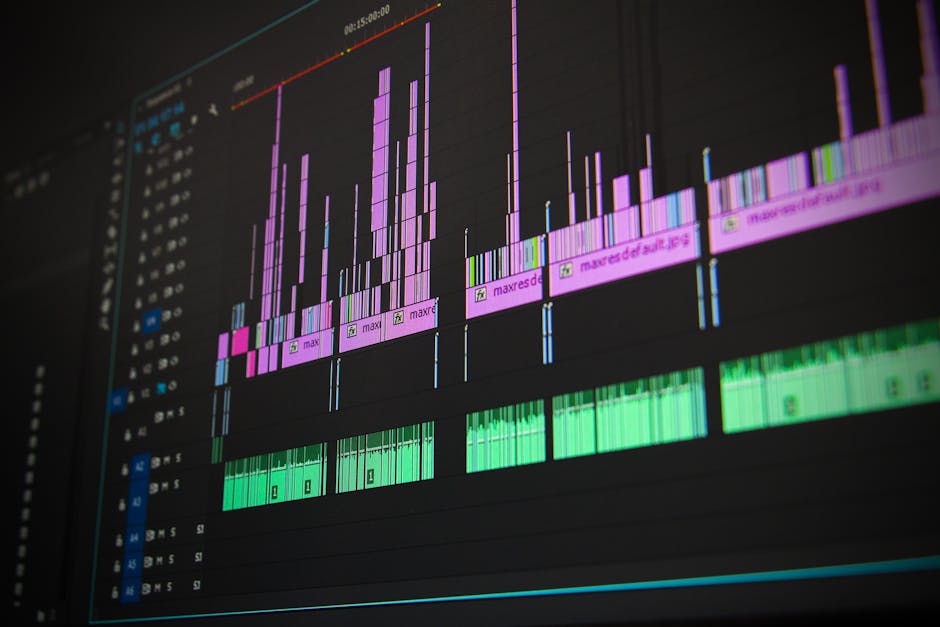What Is EndbugFlow?
Before answering the core question “should I use EndbugFlow software for making music” it’s important to understand what you’re dealing with. EndbugFlow is a lightweight, modular DAW built less for mass market appeal and more for creators who like to dig into the gears. It’s built with indie musicians, sonic tinkerers, and open source purists in mind.
Picture this: if Ableton is a smart, modern sports car and Logic is a luxury SUV, EndbugFlow is a stripped down track racer you build in your garage. It combines the clean modular thinking of platforms like VCV Rack and Pure Data with some of the structure you’d find in traditional DAWs just enough to keep your workflow grounded, but not so much that it boxes you in.
What sets EndbugFlow apart is its transparency. There’s no smoke and mirrors in the signal chain. Routing is visible. Plugin behavior is exposed. Automation doesn’t live behind layered menus it’s right there for you to tweak. For many, that makes it a control dream. But for those looking to move fast and keep things simple, it can feel like overkill.
In short: if you’re the type who asks “why” as much as “how,” EndbugFlow gives you full answers. If you just want to get tracks out the door, you might find it a slower start.
Should I Use EndbugFlow Software for Making Music If I’m a Total Beginner?
That depends entirely on how your brain likes to work. If you’re the kind of beginner who clicks every button just to see what it does, EndbugFlow might be your playground. It’s modular, open ended, and unapologetically hands on. You don’t load up a polished synth preset and hit record you build signal paths, tweak logic nodes, and wire functions together like audio Lego.
But if you’re looking to open the box and start making bangers in an hour, this isn’t that. EndbugFlow isn’t built with training wheels. Its flexibility comes with friction. You’ll be learning as you go, often from forums and documentation, not from flashy pop up tutorials.
No commercial sound packs. No turnkey beats. But if you’re a beginner who wants to actually understand how sound design works why envelopes matter, how routing transforms tone EndbugFlow can feel like skipping school and still getting a degree. It’s brutal at times, but honest. And the open source community? Surprisingly generous. What it doesn’t give you directly, it teaches you to build.
If you’re okay getting your hands dirty, it might be the most educational DAW you’ll ever touch.
What Features Stand Out?

One of the most compelling reasons to consider EndbugFlow is its innovative approach to workflow. Unlike traditional DAWs that hide complexity behind aim and click interfaces, EndbugFlow leans into modular, visual, and logical control of your entire audio process.
Hybrid Workflow Design
EndbugFlow marries two powerful paradigms: node based visual programming and classic DAW timelines. This allows for workflows that are:
Highly customizable: every signal chain, effect, or instrument patch can be built and wired together exactly how you imagine.
Technically transparent: you see how each element behaves and responds in real time.
Automation reimagined: going beyond drawing curves on lanes, you can build logic driven automation. For instance:
Trigger gain adjustments only when volume dips below a threshold
Shorten reverb tails dynamically based on performance velocity
Create generative FX chains for evolving pads or glitch heavy textures
Key Standout Features
If you’re weighing the question should I use EndbugFlow software for making music these capabilities tilt the scale:
Custom Scripting
Write Python or JavaScript snippets to automate processes, manipulate MIDI data, or design bespoke utilities.
Modular Architecture
Rather than dragging loops or dropping prebuilt instruments, you’ll build your own tools and chains. It’s like sound sculpting in an open lab environment.
Community Packs
An active user forum contributes effect racks, instruments, samplers, and even workflow templates most of them free and editable.
Freedom vs. Fluency
This openness is both a strength and a challenge. With immense creative freedom comes the need for technical fluency. You won’t get far with EndbugFlow on presets alone it rewards curiosity, experimentation, and a strong willingness to learn.
So the real question isn’t just should I use EndbugFlow software for making music, but:
Do you want to build instead of being handed?
Are you looking for tools, or a playground?
Is creative control worth the extra setup?
For the right kind of user, this environment unlocks endless sonic possibilities.
EndbugFlow vs Traditional DAWs
Compared to Logic Pro, FL Studio, or Ableton Live, EndbugFlow isn’t trying to win the beauty pageant. It’s slimmer. Less guided. And way more manual out of the gate. You won’t find glossy virtual instruments or smart drag and drop layouts ready for immediate flow. What you get instead is a bare metal approach to music creation one that prioritizes control over convenience.
To anyone coming from Max/MSP or Reaktor, this won’t be shocking. There’s a creative thrill in building your own signal paths, breaking them, and then rebuilding them better. You get to script, patch, and route audio like a technician with an obsession. It’s not fast by default, but it’s powerful on your terms.
That’s the tradeoff. Traditional DAWs give you speed, polish, and frictionless automation. EndbugFlow gives you a framework to invent your own tools then tweak them endlessly. So when you ask, “should I use EndbugFlow software for making music if I already use [insert DAW]?” you’re really asking what kind of creator you want to be right now. Someone getting it done faster, or someone going deeper.
If it’s the latter, EndbugFlow won’t disappoint. If it’s the former, best to stick with your current setup or keep EndbugFlow in the lab for late nights and sonic experiments.
We’ve all been burned by complex tools that promise “powerful features” but end up dragging us into a spiral of menus and configuration hell. EndbugFlow doesn’t hide behind glitz it throws you into the guts of the system, for better or worse.
So, should you use EndbugFlow software for making music if speed is your top priority? The honest answer is: not right away. The UI takes a bit of rewiring. It’s clean but sparse. You’ll see nodes, cables, and live patching instead of familiar dropdowns and pre mapped sliders. That can feel like a blank canvas or total chaos depending on how you approach workflow.
This isn’t a tool built to impress at first glance. It’s built for those who like to lay their own roads, not follow them. The UX has intention behind it, but the curve is real. Once you dial in your templates and favorite rig setups, though, EndbugFlow becomes almost frictionless. Snappy, reliable, uniquely yours. But getting there takes time, and some trial and error.
If you’re after out of the box polish, look elsewhere. If you’re willing to trade early speed for long term control, the UI won’t disappoint you just have to earn it.
The Price to Power Ratio
Another key reason to ask “should I use EndbugFlow software for making music” is simple economics. It’s free. Not crippled demo free fully open source, with optional paid support if you want it. That’s a rare deal in a space crowded with expensive licenses, monthly plans, and gated features. If you’re new to music production or just not keen on dropping serious cash before knowing what fits you it’s an obvious starting point.
The value doesn’t stop at the download. Pair EndbugFlow with some solid free VSTs (you’d be surprised how good the freeware scene has gotten lately), and you’re looking at a seriously functional, low footprint setup. No bloat, no branding splash screens, just flexible tools.
Some producers aren’t ditching their DAWs to go all in on EndbugFlow. Instead, they use it as a tactical satellite something they open when they want to prototype a wild synth patch, run a granular experiment, or break out of the traditional timeline grid. It’s not about choosing one tool over the other; it’s about expanding your creative territory without paying a toll every time you do.
If you’re reading this while juggling six Ableton sessions and side eyeing your CPU monitor, the question “should I use EndbugFlow software for making music” isn’t just valid, it’s strategic. For producers who like to get under the hood, tweak signal flow, and build toolchains from scratch, EndbugFlow offers something refreshing: raw access.
It’s not a plug and play DAW. Don’t expect drag and drop drum kits to get you halfway to a finished track. What you get instead is modularity, control, and the freedom to bend your workflow however you want. Of course, that comes with trade offs. You’ll spend more time setting up, testing, and customizing. There’s little hand holding. But once it clicks, the possibilities are wide open.
If you’re the type who automates everything, wants fluid signal chains, and prefers precision over presets, then EndbugFlow can unlock a different level of creative execution. It’s not better than mainstream DAWs it’s just wired differently. Used right, it becomes less of a DAW and more of a sonic prototyping platform.
So, should you use EndbugFlow software for making music? If you crave flexibility over convenience and you’re tired of menu mazes slowing down your ideas, then yes it might just be your unfair advantage.
